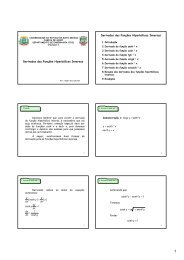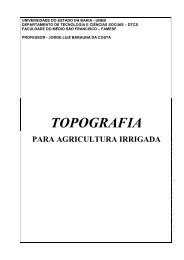Anuário Brasileiro do Arroz 2011 - Unemat
Anuário Brasileiro do Arroz 2011 - Unemat
Anuário Brasileiro do Arroz 2011 - Unemat
Create successful ePaper yourself
Turn your PDF publications into a flip-book with our unique Google optimized e-Paper software.
24<br />
Intimate enemy<br />
Brazil needs to surmount its own obstacles to<br />
improve its competitive edge and export more<br />
If it is a matter of attracting loyal<br />
clients and earning a reputation as a reliable<br />
supplier of rice in the international<br />
market, Brazil will have to conquer its<br />
own internal barriers and become effectively<br />
competitive. After acting as<br />
exporter for seven years, the Country is<br />
still viewed as an opportunistic supplier,<br />
taking advantage of circumstances induced<br />
by exchange rate fluctuations,<br />
international crises, crop frustrations in<br />
producing countries and support mecha-<br />
nisms, among other factors, to mark its<br />
presence abroad.<br />
Quality and exportable volumes <strong>do</strong><br />
exist. The problem is the price. In the<br />
2010/<strong>2011</strong> cycle the Country is operating<br />
with one of the highest market prices<br />
among the exporting countries, by virtue<br />
of the unfavorable exchange rate policy,<br />
high production cost, poor logistics and<br />
high taxation. “The highly valued real<br />
raises the price of our rice in the international<br />
marketplace, although at home<br />
it is still lagging behind the minimum<br />
price”, says Tiago Sarmento Barata, analyst<br />
with Agrotendencias Consultoria em<br />
Agronegócios.<br />
According to him, because of the exchange<br />
rate, a 50-kilo sack of rice in the<br />
husk, quoted a minimum price of R$<br />
25,80, is equivalent to US$ 15,83 (exchange<br />
rate: US$ 1 = R$ 1.63 in early<br />
April), while average quotes in the international<br />
market range from US$ 10.00<br />
to US$ 13.00. Production costs also press<br />
<strong>do</strong>wn competitiveness. According to the<br />
Rio Grande <strong>do</strong> Sul Rice Institute (Irga),<br />
the cost for producing a 50-kilo sack of<br />
rice in the husk reached R$ 29.13 in the<br />
2010/<strong>2011</strong> crop in Rio Grande <strong>do</strong> Sul,<br />
equivalent to US$ 17.87, considering the<br />
same exchange rate, it is an unrealistic<br />
price in the international scenario.<br />
In the meantime, the cereal from<br />
Uruguay was exported for less than US$<br />
12.00 over the period, and yielded profits<br />
for the producers. Relying on incentives<br />
and lower taxation rates, in that country<br />
Inor Ag. Assmann<br />
average production prices range from US$<br />
9.00 to US$ 11.00, and the same goes for<br />
Argentina. In Barata’s view, the incidence of<br />
taxes, like the ICMS (state value-added tax)<br />
and the Tax for Social Security Financing<br />
(PIS/Cofins), levied on the inputs and then<br />
on the cereal, is a major factor in the high<br />
national cost. What also counts is high<br />
transportation costs, fees and other port<br />
costs. “The sum of these factors has an impact<br />
on competitiveness”, he states.<br />
Alexandre Selk, a partner at Risoy<br />
Corretora, in Pelotas (RS), understands<br />
that Brazil tends to become a<br />
frequent and relevant supplier in global<br />
terms. “In spite of the difficulties<br />
imposed by the exchange rate and the<br />
little attractive relationship between<br />
the prices at home and abroad, we<br />
managed to export 627 thousand tons<br />
of rice in the husk in 2010/11”, he<br />
observes.<br />
But Selk understands that there are<br />
difficulties to be surmounted, as the<br />
Brazilian export-oriented efforts have<br />
only been occurring in light of atypical<br />
situations in the international scenario,<br />
or through commercialization support<br />
mechanisms. “We have a consolidated<br />
market for exporting broken rice, which<br />
is expected to soar. Brazil also exports<br />
parboiled rice, and is very competitive<br />
and quality-oriented in that score”, he<br />
explains. This is not the case of white<br />
rice, although 40 thousand tons were<br />
recently exported to Cuba (equivalent to<br />
TAXES,<br />
LOGISTICS<br />
AND COSTS<br />
IMPAIR SALES<br />
58.8 thousand tons in the husk).<br />
The vice-president of the Brazilian<br />
Commodities Exchange (BBM), region of<br />
Rio Grande <strong>do</strong> Sul, Jair Almeida da Silva,<br />
maintains that, in spite of the difficulties,<br />
and thanks to the trading companies,<br />
this production chain is learning<br />
how to export, finding ways, conquering<br />
clients and investing a lot in order to<br />
keep the <strong>do</strong>ors open in the international<br />
scenario, with operations in containers,<br />
small quantities, distinctive standards<br />
and varieties, as a manner to show the<br />
quality of the products. “Now, the world<br />
views Brazil as a supplier of huge potential.<br />
As a matter of fact, the world<br />
is waiting for us to surmount our own<br />
barriers in order to expand our share in<br />
the market”, he acknowledges. Brazil’s<br />
potential clients are the Middle East,<br />
Africa, the Caribbean, South and Central<br />
America and Europe.<br />
The national challenge to expand its<br />
presence abroad as a supplier, requires<br />
the implementation of measures that<br />
tackle the structures, and not just emergency<br />
commercialization measures. “The<br />
market looks for regular and stable suppliers,<br />
with a capacity to compete with<br />
the other countries. This is the condition<br />
Brazil needs to conquer”, says Tiago<br />
Sarmento Barata, of Agrotendências.<br />
Meanwhile, shipments depend on opportunities<br />
and on some niches where<br />
our national product is supposed to be<br />
competitive.



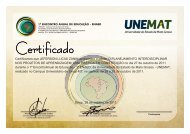
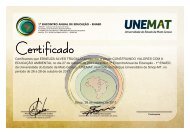
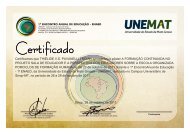
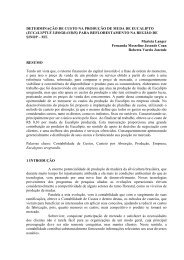
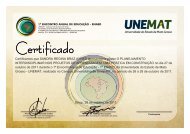
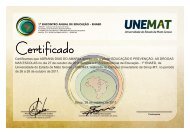
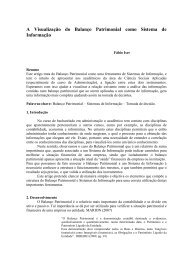
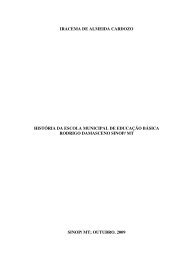

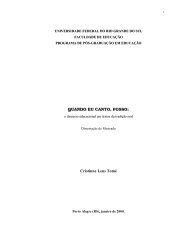
![Aula 31 - Funções Hiperbólicas [Modo de Compatibilidade] - Unemat](https://img.yumpu.com/14334654/1/184x260/aula-31-funcoes-hiperbolicas-modo-de-compatibilidade-unemat.jpg?quality=85)
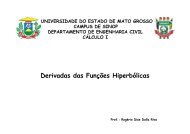
![Aula 31 - Funções Hiperbólicas [Modo de Compatibilidade] - Unemat](https://img.yumpu.com/14332146/1/190x135/aula-31-funcoes-hiperbolicas-modo-de-compatibilidade-unemat.jpg?quality=85)
